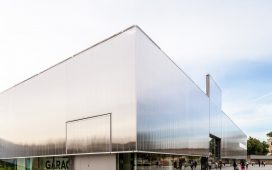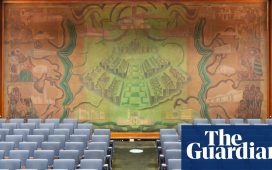The Champs Élysées is one of the most famous streets in the world, but you could say the French were beaten to it by the Mughals. About 15 years before the avenue was laid out in 1667 in Paris, India’s Mughal emperor Shah Jehan built a grand mile-long street in his capital to reflect the glory of the empire at its height.
It ran from Fatehpuri mosque at one end to the colossal Red Fort at the other and was lined with trees, elegant mansions, mosques and gardens. Provisions for the Red Fort, the imperial residence, were carried down the boulevard by elephants, camels and horse-drawn carriages.
In the centre ran the clear waters of a canal, reflecting the moonlight, or chandni – giving the street its name, Chandni Chowk (chowk means open market space). On hot summer evenings, the Bishti, a tribe of water carriers, would sprinkle water from their goat-hide canteens to cool the street.

But while the Champs Élysées has retained its grandeur, Chandi Chowk and the area around it have degenerated into a mess of heaving crowds, dense traffic, decrepit buildings, pavements taken over by hawkers, tangled overhead electrical wires and general mayhem. The area known as the Walled City, or Old Delhi, is probably the most congested place in India.
In a cool, tranquil studio in Aya Nagar, far away from the chaos, an architect is working to restore the Mughal splendour of Chandni Chowk. Pradeep Sachdeva’s firm, commissioned by the Delhi government, began work in December. The area has already been dug up and work is under way in an effort to meet the January 2020 completion date.
On his computer screen is an image of how it will look. The most striking feature is the absence of cars. His design shows a calm street lined with trees, benches and lights, with wide pavements on either side of a green central lane. The electrical and telecom cables and water lines are buried underground.
Since this is one of the busiest market areas in India (the Khari Baoli spice market by Fatehpuri mosque is Asia’s oldest), vehicles have to be allowed in to unload goods – but this will be restricted to the early hours of the morning.

“This is one of the most important street designs in the world because few streets are this old and few embody so much urban complexity,” says Sachdeva. “It represents all that is complex about urban India and if we get the transformation right it will become an example for hundreds of such precincts across the country.”
He says western designs don’t work in India because they lack the cycle rickshaws, the street hawkers and the high density of people.
One of the first decisions he made was to not recreate the canal. “We know from our other projects that we can’t look after bodies of water in India. They get full of waste. So we have symbolised the canal by placing water-like patterns in the central median.”
Another tricky decision was where to place public toilets and police kiosks. He settled on placing them in the central strip, rather than on the footpaths where they would have been an obstruction.
Sachdeva is acutely aware of how important the redevelopment of Chandi Chowk is for the residents of Old Delhi, the historic old quarter where the majority of residents are Muslim. For decades, they have felt neglected by the authorities who seemed to care more for other areas of the capital over the of part which, ironically, boasts all the heritage.

haveli, or townhouse. on Chandni Chowk in 1858. Photograph: Felice Beato/Hulton Archive/Getty Images
Over the years, affluent Hindu families fed up with the congestion and pollution vacated their havelis – mansions featuring a courtyard, fluted columns and doors high enough for elephants to enter – and moved to modern houses in south Delhi.
Many Muslim residents, emotionally attached to the Walled City and its Mughal heritage, stayed on. The Walled City was, after all, the capital of the Mughals until the last emperor, Bahadur Shah Zafar, was deposed and exiled by the British in 1858. In 1911, the British transferred the capital from Kolkata to Delhi and built a new city – New Delhi – on the south side of Old Delhi.
Old Delhi lost its status, but residents still derive pride from its historical importance and the fact that Chandi Chowk was once one of the most beautiful streets in the world. Most living here want it preserved as a beautiful historic quarter where visitors can walk without fear of being run over and where residents can enjoy a good quality of life.
“It’s about restoring the original beauty of Old Delhi but it’s also about being good for business,” says Santosh Verma, the owner of a stationery shop. “We need a total facelift to create order and cleanliness out of this chaos.”

The revamp of the entire area has been discussed for more than 15 years but no government has had the will to push it through. Sachdeva believes the Chandni Chowk project will kickstart the transformation of the whole Old Delhi area, but he has run into his own problems.
A group of conservationists and architects have filed petitions in the Delhi high court objecting to one major feature of Sachdeva’s design: the placing of utilities in the central median. They claim this will act as a “wall” between the two sides of the street and destroy the area’s visual integrity.
“In redeveloping an area you must respect its heritage, but the spirit of this processional avenue is being destroyed with this design,” says AG Krishna Menon, an architect and urban planner. “You can’t put electrical transformers and public toilets in the middle. It breaks up the whole vista. They need to be somewhere else.”
In his studio on the fringes of the capital, Sachdeva sounds weary rather than angry. His design has already been through numerous consultations with multiple stakeholders. While he respects the need for democratic debate, he insists there is no other suitable location for the toilets. As for the transformers, if he had placed them away from the central median and closer to the shops and pavements, the shopkeepers would have been up in arms.
“They would have objected. It’s also a safety hazard. Transformers have caught fire in the area. We have to keep them away from the shops and sidewalks,” he says. “Moreover, this is not a conservation project. It is not conserving a monument like the Taj Mahal. This is about re-developing a living street where people live and work. You have to strike a balance between heritage and their needs.”
Sachdeva hopes the high court judge will let the scheme proceed. “People here have been waiting a long time for this transformation,” he adds. “We can’t disappoint them.”
Follow Guardian Cities on Twitter, Facebook and Instagram to join the discussion, catch up on our best stories or sign up for our weekly newsletter








